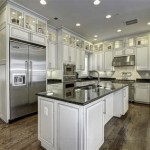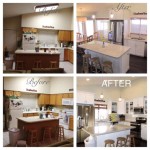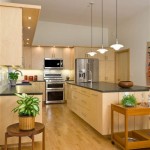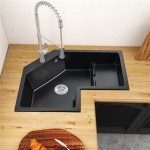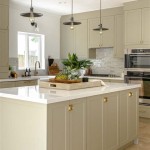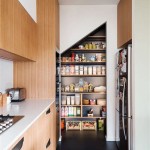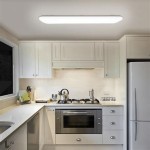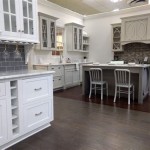Incorporating a Weber Grill into Your Outdoor Kitchen: A Comprehensive Guide
An outdoor kitchen allows for expanded cooking and entertaining possibilities, bringing the comfort and functionality of an indoor culinary space to the open air. The selection of appliances for an outdoor kitchen is a crucial step in its design and construction. Among the various grilling options available, Weber grills stand out for their reputation for quality, durability, and performance. This article provides a comprehensive overview of integrating a Weber grill into an outdoor kitchen, covering key considerations, model selection, installation aspects, and maintenance practices.
Key Point 1: Weber Grill Models Suitable for Outdoor Kitchen Integration
Weber offers a range of grills suitable for permanent installation into an outdoor kitchen setup. The suitability of a specific model depends on the desired features, cooking capacity, fuel type, and budget. The most common Weber grill lines for outdoor kitchens include the Summit, Genesis, and built-in models. Each series offers distinct advantages and caters to different grilling preferences.
The Weber Summit series represents the premium option, featuring robust construction, ample cooking space, and a variety of advanced features such as integrated smoker boxes, sear stations, and rotisserie systems. Summit grills are typically available in natural gas or liquid propane configurations and are designed for high-performance grilling and smoking. Their size and feature set make them suitable for outdoor kitchens designed for frequent and elaborate entertaining.
The Weber Genesis series offers a balance of performance, features, and affordability. Genesis grills are known for their consistent heat distribution, porcelain-enameled cast iron cooking grates, and durable construction. They are available in both natural gas and liquid propane models, with varying sizes and features to accommodate different cooking needs. Genesis grills provide a reliable grilling experience and are a popular choice for homeowners seeking a versatile and durable grill at a moderate price point.
Weber also offers dedicated built-in grill models specifically designed for integration into outdoor kitchens. These models are engineered for seamless installation into custom-built islands and countertops. Built-in grills often feature stainless steel construction, integrated ignition systems, and ample cooking space. They provide a clean and professional aesthetic, enhancing the overall look and functionality of the outdoor kitchen.
When choosing a Weber grill for an outdoor kitchen, consider the following factors: cooking capacity (measured in square inches of cooking surface), BTU output (British Thermal Units, a measure of heating power), fuel type (natural gas or liquid propane), materials (stainless steel, porcelain-enameled cast iron), features (sear stations, side burners, rotisserie systems), and warranty. Evaluating these factors will help determine the most suitable Weber grill model for the intended purpose and budget.
Key Point 2: Planning and Installation Considerations
Proper planning is essential when integrating a Weber grill into an outdoor kitchen. This includes determining the location of the grill within the kitchen layout, ensuring adequate ventilation, adhering to safety regulations, and preparing the necessary utility connections. Careful planning will prevent potential issues and ensure a safe and functional outdoor cooking space.
Location is a key consideration. The grill should be positioned in a location that allows for easy access and maneuverability. It should be located away from flammable materials and structures, such as overhanging trees or wooden fences. Wind direction should also be taken into account to minimize smoke blowing into the house or seating areas. Furthermore, consider the proximity to other outdoor kitchen components, such as countertops, sinks, and refrigerators, to optimize workflow.
Ventilation is crucial for outdoor kitchens, particularly those with enclosed structures. Proper ventilation helps to dissipate smoke and heat, preventing the buildup of carbon monoxide and reducing the risk of fire. Building codes often require specific ventilation standards for outdoor kitchens with grills. Ensure that the grill is positioned in an area with ample airflow, or consider installing a dedicated ventilation hood.
Safety regulations must be followed during the installation process. This includes adhering to local building codes, obtaining necessary permits, and ensuring that all gas connections are properly installed and tested. A qualified plumber or gas technician should handle all gas line connections to ensure safety and compliance with regulations. Electrical connections, if required for ignition systems or other grill features, should be performed by a licensed electrician.
Utility connections, such as gas lines and electrical outlets, must be planned and installed prior to the installation of the grill. Natural gas lines should be sized appropriately to deliver sufficient gas pressure to the grill. Liquid propane tanks should be stored safely and securely, away from heat sources and flammable materials. Electrical outlets should be equipped with ground fault circuit interrupters (GFCIs) to prevent electrical shocks.
The construction of the outdoor kitchen island or countertop must be compatible with the dimensions and specifications of the chosen Weber grill model. The grill should fit snugly into the cutout, with adequate clearances for ventilation and access to controls. The countertop material should be heat-resistant and durable, such as granite, concrete, or stainless steel. Ensure that the island or countertop is level and stable to provide a secure platform for the grill.
Key Point 3: Maintenance and Care of Weber Grills in Outdoor Kitchens
Regular maintenance and care are essential for prolonging the lifespan and maintaining the performance of a Weber grill in an outdoor kitchen. Proper cleaning, inspection, and storage practices will help prevent rust, corrosion, and other issues that can affect the grill's functionality.
Cleaning the grill after each use is crucial. Remove food debris and grease buildup from the cooking grates using a grill brush. Periodically clean the entire grill interior, including the burner tubes, flavorizer bars, and grease collection system. Use a mild soap and water solution to clean the exterior surfaces of the grill. Avoid using abrasive cleaners or scouring pads, as they can damage the finish.
Regular inspection of the grill's components is important for identifying potential problems. Check the burner tubes for clogs or damage. Inspect the gas lines for leaks or cracks. Examine the ignition system to ensure it is functioning properly. Replace any worn or damaged parts as needed. Addressing minor issues promptly can prevent them from escalating into more significant problems.
Protecting the grill from the elements is crucial for outdoor kitchens. When the grill is not in use, cover it with a grill cover to shield it from rain, snow, and sun. A grill cover will help prevent rust and corrosion and extend the life of the grill. Consider storing the grill indoors during the off-season, especially in regions with harsh winters.
Proper storage practices are important for grills that are not used frequently. Clean the grill thoroughly before storing it. Disconnect the gas line and store the propane tank in a safe and secure location. Cover the grill with a grill cover or store it indoors to protect it from the elements. Periodically check the grill for signs of rust or corrosion and address any issues promptly.
For grills with stainless steel components, regular polishing can help maintain their shine and prevent corrosion. Use a stainless steel cleaner and polish to remove fingerprints, water spots, and other blemishes. Follow the manufacturer's instructions for proper application and buffing. Polishing stainless steel components will enhance the appearance of the grill and protect it from the elements.
By following these maintenance and care guidelines, homeowners can ensure that their Weber grill remains in optimal condition and provides years of reliable performance in their outdoor kitchen. Regular cleaning, inspection, and protection from the elements are essential for prolonging the lifespan and maintaining the appearance of the grill.

Pin Page

Weber Outdoor Kitchen Configurator Official

Weber Bbq Kitchen 231

Weber Outdoor Kitchen Configurator Official

Weber Summit Sb38 S Built In Gas Grill Natural

Weber Dream Bbq Station Easy Diy Outdoor Kitchen Build

Weber Outdoor Kitchens

Weber Brings The Heat To 2024 Bbq Magazine

Weber Grill Island

Can I Build My Grill Into A Structure Burning Questions
See Also

